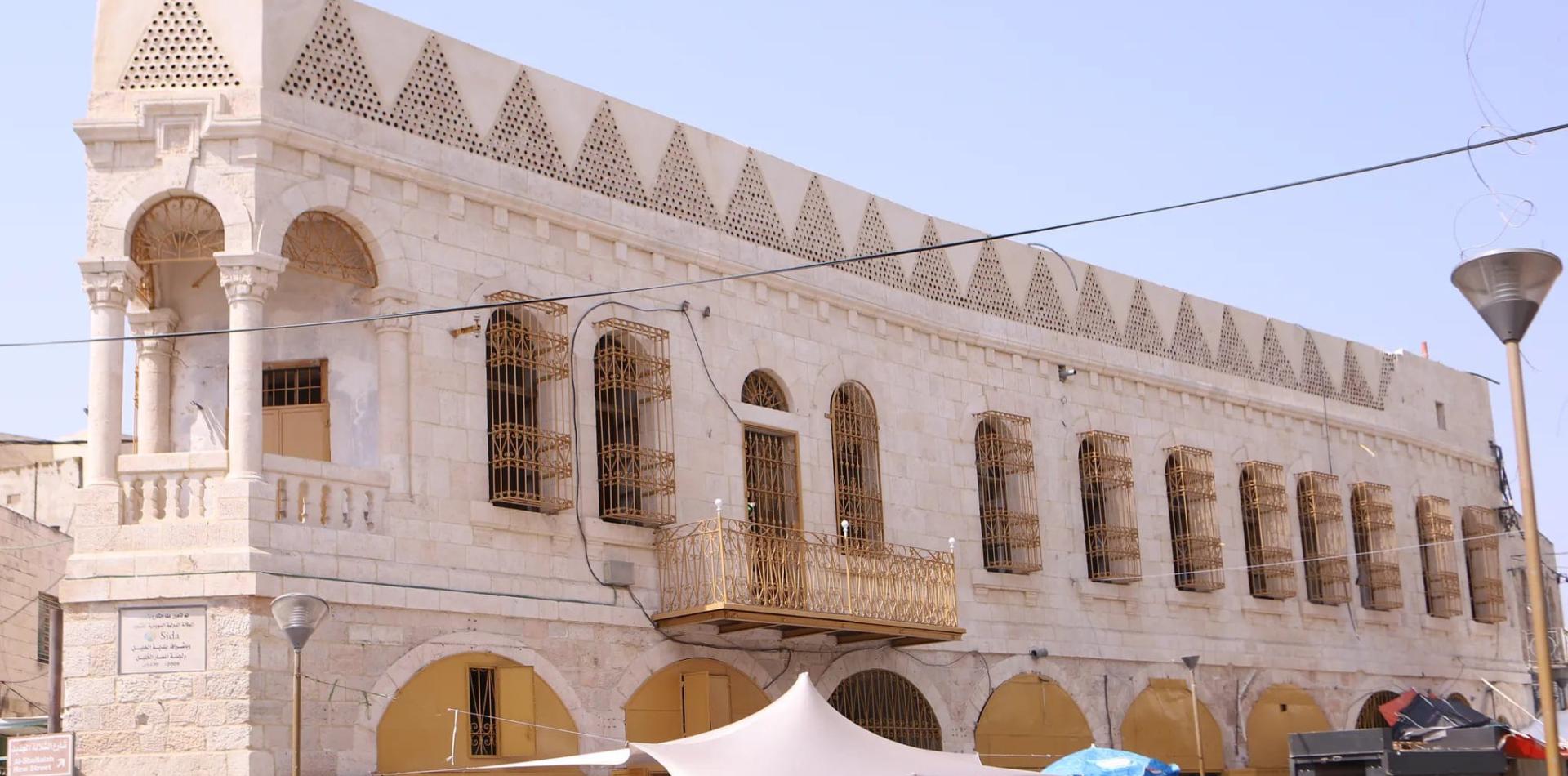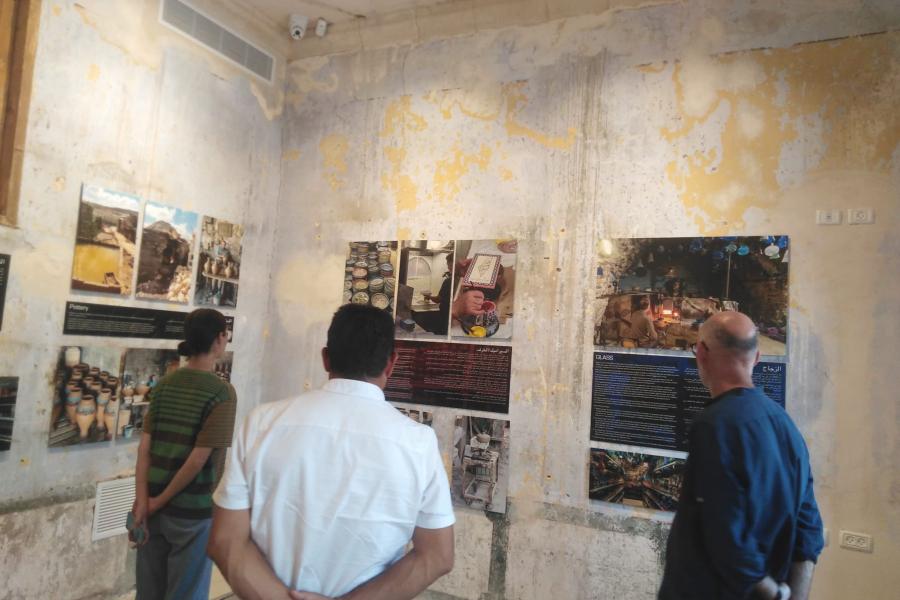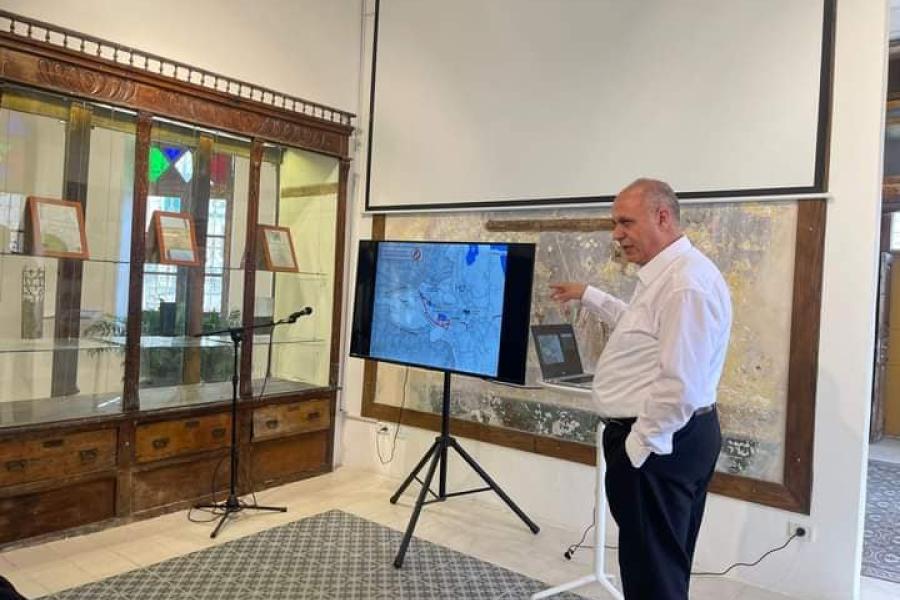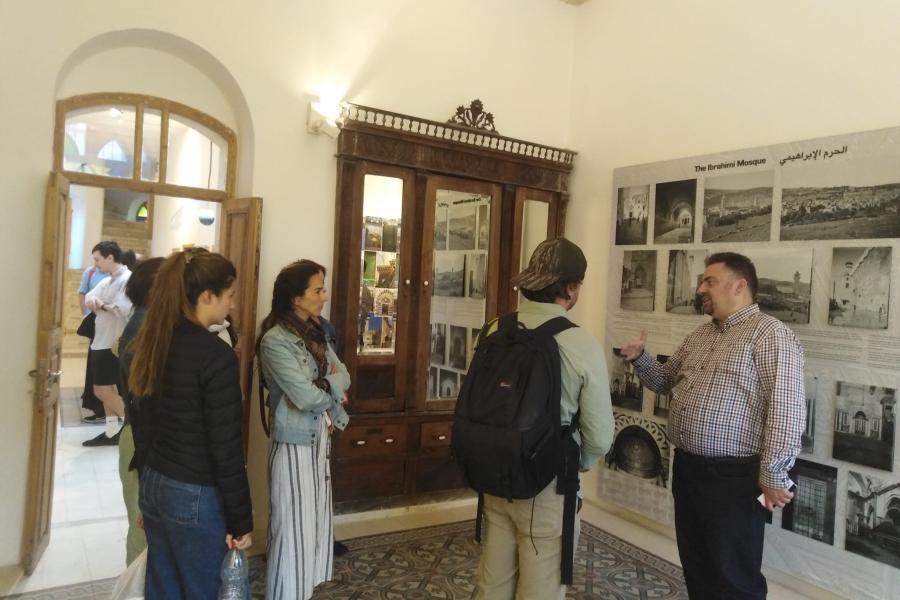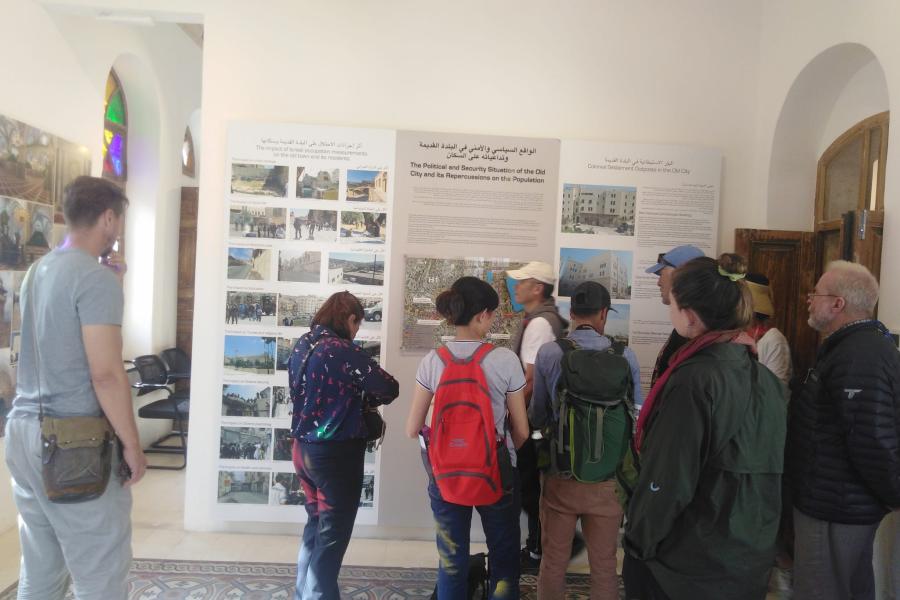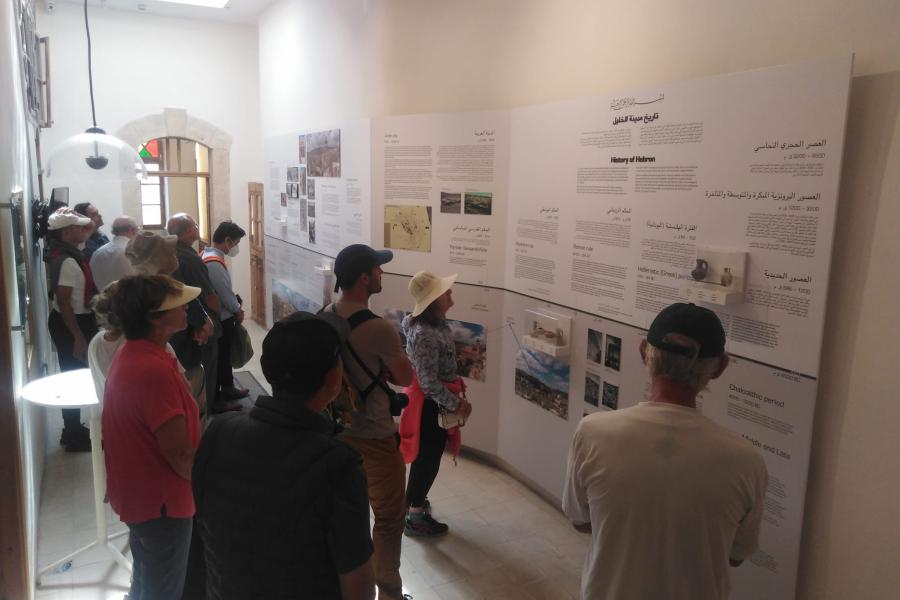The Old Town of Hebron abounds with a unique cultural heritage with varied artistic, aesthetic and functional forms that reflect an ancient civilization with its most accurate urban and architectural features. The nature of the Old Town of Hebron was conserved thanks to the efforts made by the HRC. It preserved these cultural components to pass them on to future generations.
The idea of creating a museum in the old town appeared to reflect its civilization and cultural heritage, and tell current and future generations about their city. It is important to raise the awareness of local community members and increase their knowledge of their town’s heritage, history, urban development, political conditions surrounding it, and efforts to protect and preserve this heritage. The Interpretive Museum also plays an important role in encouraging tourism to the Old Town and is considered one of its components. Therefore, this project targets all segments of the local and international community.
HRC celebrated the opening of this museum which is located in the building of the former Palestine Hotel. It is considered a rare piece of architecture, with its vocabulary, traditional elements, architectural style and decorative formations that adorn it. HRC implemented this project with funding from Sweden through the United Nations Educational, Scientific and Cultural Organization (UNESCO). The restoration methodology was based on minimal intervention in order to preserve this historical building and its distinctive architectural and construction elements. Through simple interventions, the building was functionally adapted for use as a museum that receives visitors and citizens.
The restoration process also focused on preserving the originality of the building by preserving the restoration materials and techniques used as well as the unique architectural elements owned by the building such as the traditional tiles inside the building. The wooden cabinets were also restored and reused, and other elements such as pottery, stained glass and columns with capitals ornate were preserved.
The Old Town Museum consists of five main lobbies, each of which deals with a specific aspect of the city. The visitor walks through the available spaces according to a clear sequence to learn the information indicative of this era. After that, the visitor moves to a special room in the Ibrahimi Mosque.
It reviews information about this sacred landmark in terms of history, description, effects used in its restoration and preservation as well as the obstacles encountered in its restoration.
While the third lobby begins with HRC in terms of its establishment, objectives, master plan and achievements with regard to preserving the Old Town and restoring life to it. The fourth lobby displays Israeli policies and violations against the Palestinian residents and urban heritage.
In conclusion, the fifth room presents traditional crafts. Indeed, it represents an important aspect of the cultural heritage of the old town. It also reviews information about this sacred landmark in terms of history, description, effects used in its restoration and preservation, and the obstacles encountered in its restoration.
Project Impact
This project had significantly increased the number of visitors to the Old Town. The museum receives visitors of different age groups (school students, universities, researchers and those interested...) the museum’s surroundings turned from a semi-empty area to an area teeming with delegations and visitors. This project also had a clear role in encouraging the owners of nearby shops to open their shops and take advantage of the delegations that this museum attracts. It directly contributed to reviving the economic movement in this area and played an important role in protecting this area against the Israeli occupation violations aimed to expel the citizens and take over its buildings for expanding Israeli colonial settlements in the region.
This project also contributed to preserving one of the distinctive historical buildings and passing it on to future generations in its original form and the heritage values it carries.
Palestine Hotel
Palestine Hotel is ahistorical building stands at the entrance of the Old City in Hebron, Every visitor entering or exiting the Old City stands to admire its beauty, wondering about its history and use.
When we speak of the Palestine Hotel, we are not only talking about a traditional historical building, but about a phenomenal architectural icon. Its distinctive design, geometrical shapes, with a focus on the triangle, makes it different than any other building. This landmark possesses a number of heritage values that makes it worthwhile, and they include:
- Historical Value: this building goes back to the British Mandate period (1918 –1948), which is considered an important period in the history of architecture in Palestine. This period brought about new and different elements and approaches compared to the previous era (Ottoman Empire). This building brings a new architectural model in such a historical period, outlining its design and construction features.
- Aesthetics Value: this value comes from the building’s architecture and all its unique design elements. Such elements give some indication about the enhanced economic circumstances in that period, which has helped in producing new architecture stylesand creations. This appears clear through the decorations in the facades, pillars, and the main entrance. Interior design elements, such as decorated and colored tiles, detailed wooden elements, windows with wooden frames, metallic fences, and colored glass are all clear examples of such new styles.
- Economic Value: this building was developed originally to be a hotel, which reflects the flourishing economic and touristic situation of the old city. Later on, the building was used as a small factory to manufacture shoes, a major industry in Hebron. The historical use of this building is linked to the strong economy in the old city (Hebron Economic Center).
Through analyzing heritage values, it is clear that this building possesses distinctive values
that makes it the perfect open space for public use and visitors to the old city, so that they can enjoy its history and architecture. The idea of using the building as a museum supports this goal. Its strategic location at the entrance of the old city helps easy accessibility indifferent directions towards the building.
The Opening of the Old Hebron Museum | UNESCO

